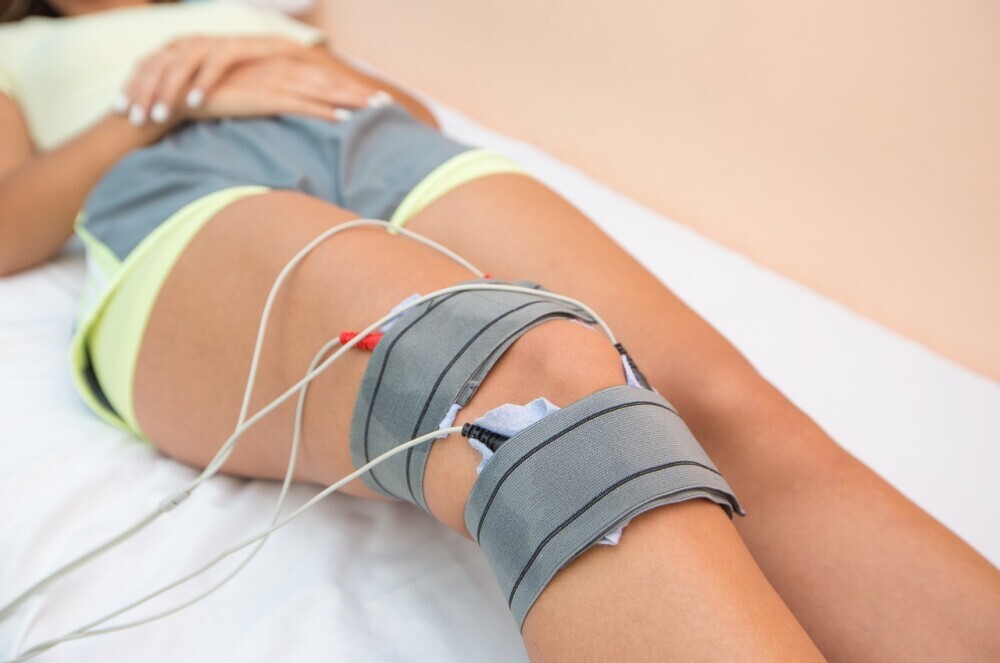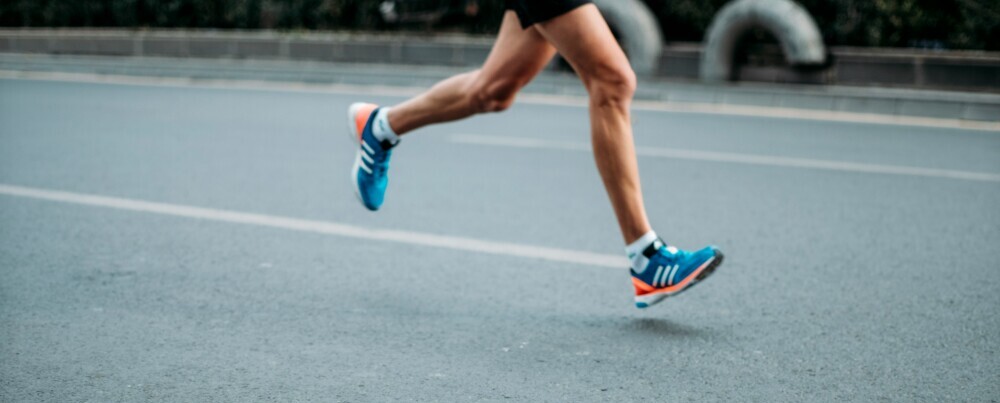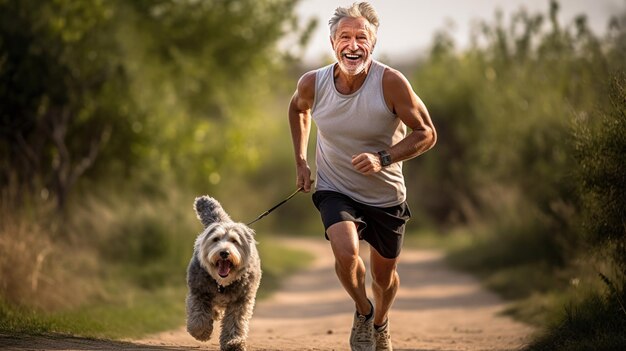I find running to be an amazingly effective and fun way to stay fit, reduce stress and organize my thoughts. However, knee pain can sometimes get in the way of an otherwise enjoyable run. In this article I will discuss the causes behind knee pain after and during running. I will also offer practical tips I have learned in my clinical work, and in my own fitness experience, to reduce discomfort and improve your running experience. After reading this you will have a good understanding of the causes of knee pain and what you can do to reduce or alleviate it.

Understanding Knee Pain After Running
Running is a high-impact activity that stresses musculoskeletal structures and the knees in particular. The knee acts as the main point of articulation between the thigh and calf, is comparatively unstable and absorbs significant pounding during running which can lead to pain.
Many runners benefit from understanding how the knee handles pressure and the factors that can increase stress. Frequent running can cause wear and tear if mileage increases too quickly, the gear is inadequate or if form is neglected. Factors such as body weight, type of shoe and socks, running surface, form, and even weather conditions can influence how much strain your knees experience.
Understanding the mechanics of knee pain can enable you to make adjustments in your training. The knee is a complex joint where tendons, ligaments, and cartilage all work together. When any one of these components is stressed beyond its limit, pain may arise or worse, an injury.
Common Causes of Knee Pain After Running
- Overuse and Repetition: Prolonged impact can lead to inflammation and soreness, especially for beginners or those returning after a break.
- Improper Running Technique: Small form errors, such as overstriding, misaligned legs, or improper footfall increase joint stress.
- Weak Supporting Muscles: The quadriceps and hamstrings help support the knee; weakness forces the knee joint and ligaments to overcompensate.
- Inadequate Footwear: Shoes that lack proper support and/or cushioning or are worn out provide inadequate shock absorption.
- Hard or Uneven Surfaces: Running on concrete or uneven terrain increases impact forces and has the potential to adversely affect even, balanced distribution of stress on joints, muscles and supportive and stabilizing ligaments.
Pay attention to your running habits to spot which factors may be causing pain and address them early to prevent worsening and to prevent developing bad habitual running form.
Dealing with Side Knee Pain
Side knee pain, often from iliotibial (IT) band syndrome, manifests on the outer knee. The IT band runs from the hip to the shin, and when it tightens or inflames, sharp pain can occur. Improper running mechanics, like excessive inward rolling of the foot, may also contribute. Proper running shoes for over pronators can help prevent or correct this and strength exercises for the hips and legs help alleviate the pain and prevent recurrence.
To further ease side knee pain, consider incorporating specific stretches and foam rolling routines into your practice. Gentle stretches targeting the outer thigh and IT band can improve flexibility and reduce tightness. Consistency is key; performing these stretches several times a week can make a significant difference, daily is even more effective.
Additionally, pay attention to your running form to avoid habits that put extra strain on your knee or outer aspect of your leg. Remember that the knee joint is most unstable in side-to-side movement. Taking a few minutes after each run to roll out your muscles can not only mitigate pain but also improve overall mobility.

How to Make Your Knees Less Painful After Running
You can ease knee pain with a few practical steps. Start with a proper warm-up; light jogging or dynamic stretching prepares the knee for impact. After running, cool down with static stretches to ease tension and reduce soreness. Consider following the R.I.C.E. method:
- Rest and Recovery: Allow enough recovery time, especially if overuse symptoms appear.
- Icing: Apply ice for 15 to 20 minutes to reduce swelling.
- Compression: Use an elastic bandage or knee sleeve for support.
- Elevation: Rest with your legs raised to improve circulation.
Also,
Strength and Flexibility Exercises: Build muscle strength around the hip and knee through yoga, Pilates, or targeted workouts.
Nutrition: Eat a balanced diet rich in protein and anti-inflammatory foods.
Professional Advice: If pain persists, consult a physical therapist.
Should I Still Run if My Knee Hurts?
If knee pain is mild, you might continue running with modifications such as reducing mileage, switching to softer surfaces, or slowing your pace. However, if pain worsens or is accompanied by swelling, it’s best to pause and consult a health-care professional. Alternating with low-impact activities like cycling, swimming or use of an elliptical trainer can keep you fit while reducing knee strain.
The Best Knee Support for Running

Supportive devices can help relieve knee pain and options range from compression sleeves to more structured braces that offer stability. Compression sleeves provide a snug fit and help with blood flow, making them popular among runners. More rigid braces give extra stabilization if you’re recovering from injury.
Advanced Strategies for Preventing Knee Pain
Once basic care is in place, consider advanced strategies for reducing knee pain. Examine your running shoes; proper arch support and shock absorption can protect your knees so regularly replacing worn-out shoes is important. Also, adjust your running form.
A slight change in how your foot strikes the ground, such as using a midfoot strike or reducing heel contact, can significantly decrease stress on the knees. Adding cross-training exercises like cycling, swimming, or strength training builds muscle without the continuous high impact of running.
Beyond adjusting your footwear and running style, consider a well-rounded training plan that includes strength sessions, balance exercises, and flexibility work. Incorporating targeted exercises like lunges, squats, and step-ups can build the muscles supporting your knees.
Balance exercises, such as single leg stands or using a balance board increase fine muscle coordination further enhancing stability. These varied training components not only help prevent pain and injuries but contribute to better overall performance on race day or casual runs. Experiment with different routines until you find the mix that works best for you.

Conclusion
Taking care of your knees is always important especially if running is part of your routine. By understanding the causes of pain, following preventative and proper recovery methods, and adjusting your training, you can continue running with less discomfort. Being mindful of your body’s limits can prevent further injury and keep you moving forward in your fitness journey.
Remember, maintaining knee health is a continuous process that involves listening to your body, its pain signals and noticing what produces improvement. Regular consultation with fitness experts or healthcare providers can offer personalized adjustments to your workout routines when needed. Your knees will thank you.


The main reason that I don’t run is knee pain. Strangely I can walk really fast and not get pain in my knees, but as soon as I start to run my knees feel very uncomfortable.
I know my feet pronate inwards so this can be the main cause of knee pain, and correcting this stance while running is really difficult, even with shoes that have been especially fitted to help my feet.
Maybe trying to run a bit walk a bit gradually will be better, but then I think, why do I want to mess with my knees at the age of 55?
Hi Michel,
Usually when running both feet are off the ground briefly mid-stride. When the forward foot strikes the ground with all of your body weight, and depending on your running form, some kinetic energy from momentum, the impact is absorbed by your joints and primarily the knee. This energy and the associated impact are greatly diminished in walking.
Some pain is normal when you are getting started. As long as it is not extreme or chronic you may just be experiencing transient discomfort. You could try a walk/jog form. In jogging vs running the main difference regarding form is that your knees will not come up as far combined with the slower pace translates to a reduced impact when your foot lands, so less impact to your joints. Jog for a bit, then walk a bit, then jog again. The goal is to raise the heart and breathing rate for a sustained time. This builds cardiopulmonary endurance and overall fitness. I noticed that your profile says you are a dance educator. Whatever is successful in managing knee impact when dancing might have some application in running.
Of course, nobody wants to “mess with” their knees. But no exercise messes with your total health and well-being. Running is not the only option for exercise. Other options are biking or swimming. For people with joint issues swimming is ideal as there is no impact to your joints. And dancing looks like exercise too, so maybe you don’t need to run.
Other suggestions are high quality running shoes. If your pronation is extreme, you can also get custom corrective in-soles. You might try seeing a podiatrist. This is probably a good idea whether you are going to run or not.
Thanks for reading my article.